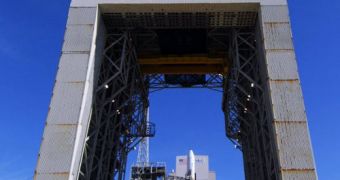On Thursday, January 20, the United States launched a new classified satellite from California, aboard the biggest available delivery system the country operates. Now, amateur astronomers believe they have discovered the newly-launched spacecraft in Earth's orbit.
When the US Air Force (USAF) launched the satellite it marked the first time that a heavy-lift delivery system took off from anywhere on the West Coast in years. The Delta 4-Heavy rocket is currently the largest the nation has access to.
It was launched from the SLC-6 Vandenberg Air Force Base (VAFB), in California, and managed a successful lift-off and orbital insertion. Since the USAF did not give any details about the payload, everyone was free to put in their two cents.
The fact that the new satellite was launched aboard such a massive system speaks volumes about its size and potential uses, say amateur astronomers, who believe that this is a new addition to the US' surveillance and security network.
Some say that the new instrument may be a Keyhole-type spacecraft, which is heavily used by the intelligence community in the country for acquiring ultra-high resolution imaging. These satellites play an important role in ensuring that the US remains informed ahead of its enemies.
Another thing that makes amateur satellites trackers believe that this is a spy satellite is the fact that the spacecraft confirmed their original suspicions, heading into the Keyhole satellite constellation.
At this point, there are about 14 to 15 Keyhole satellites in polar orbits around the planet. From the outside, they look like large telescopes, and their advanced cameras allow them to conduct very precise surveillance missions.
It could be that the new spacecraft is destined to take the spot of another, aging satellite, that could be deorbited soon, Space reports.
“This aged spacecraft probably is nearing the end of its useful life, which typically is determined by the supply of propellant required to maintain the orbit,” explains satellite tracker Ted Molczan.
“I'm grateful to everybody who worked so hard to make this mission happen, the launch team, the satellite vehicle team and our mission partners,” said after the successful launch Col. Alan Davis, who is the Office of Space Launch director.
“It is always a great feeling to have hard work culminate in success. When the satellite becomes operational, it will assure the U.S. continues to enjoy superior vigilance from above,” he added.

 14 DAY TRIAL //
14 DAY TRIAL //